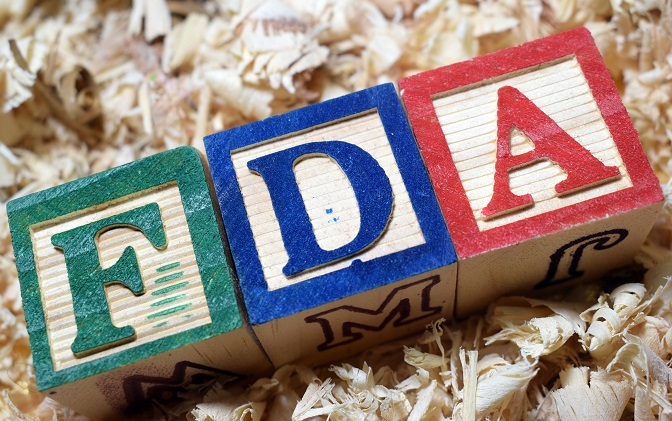
 Data Structure
Data Structure Networking
Networking RDBMS
RDBMS Operating System
Operating System Java
Java MS Excel
MS Excel iOS
iOS HTML
HTML CSS
CSS Android
Android Python
Python C Programming
C Programming C++
C++ C#
C# MongoDB
MongoDB MySQL
MySQL Javascript
Javascript PHP
PHP
- Selected Reading
- UPSC IAS Exams Notes
- Developer's Best Practices
- Questions and Answers
- Effective Resume Writing
- HR Interview Questions
- Computer Glossary
- Who is Who
What is the full form of FDA?
Introduction
Food and Drug Administration (FDA) is the federal government's regulatory body in charge of ensuring the security, efficacy, and safety of food, medical devices, biological products, pharmaceuticals for humans and animals, cosmetics, and radiation-emitting products in order to safeguard and promote public health.

Since the Pure Food and Drugs Act's passage in 1906, when the agency was established, it has been crucial in defending consumers against dangerous or ineffective goods.
History of FDA
The FDA was established in the early 1900s, at a time when public concern about the security and caliber of the food and medications being marketed increased. Congress approved the Pure Food and Drugs Act of 1906 in response to these worries, creating the Bureau of Chemistry, the FDA's forerunner.
The Food, Drug, and Insecticide Administration, formerly known as the Bureau of Chemistry, was renamed the Food and Drug Administration (FDA) in 1930. The FDA received increased regulatory authorities and responsibilities throughout the ensuing decades, including control over the security of medical devices and legislation governing the promotion of prescription pharmaceuticals.
Over the years, the FDA has been crucial in a variety of public health issues. For instance, the agency's actions in the 1930s resulted in the removal of the hazardous elixir sulfanilamide, which contained a poisonous solvent and was responsible for over 100 fatalities.
With an emphasis on addressing new and emerging health dangers like the opioid problem and the COVID-19 pandemic, the FDA has widened its regulatory role in recent years. The FDA has worked to assure the effectiveness and safety of several goods that customers rely on a daily basis.
Functions of FDA
The Food and Drug Administration (FDA) has several key functions, including
Regulatory oversight Drugs for both humans and animals, medical equipment, biological goods, food, cosmetics, and tobacco products are just a few of the many things that the FDA is in charge of regulating. For the purpose of ensuring the security, effectiveness, and caliber of these items, the agency's regulatory control involves establishing standards, carrying out inspections, and enforcing laws.
Approving new products Before they may be offered to the general public, new medications, medical devices, and biological products must be reviewed and approved by the FDA. New colour additives, animal medications, and food additives are all reviewed and approved by the agency.
Monitoring product safety The FDA keeps an eye on the security of goods sold and responds to safety issues when they appear. The organisation gathers information on adverse effects and other safety concerns involving medications, medical equipment, and other items, evaluates that information, and then takes appropriate action, such as issuing safety alerts, recalls, or warning letters.
Conducting research In order to improve public health and inform its regulatory decisions, the FDA carries out scientific research. Studies on the efficacy and safety of medications as well as inquiries into new health risks may be included in this research.

To protect public health and safety, the FDA collaborates closely with other federal agencies, foreign regulatory organisations, and business stakeholders. This cooperation could entail information exchange, regulatory coordination, or the creation of cooperative initiatives to tackle common problems.
Importance of FDA
The Food and Drug Administration (FDA) is a significant organisation because it protects the public's health and fosters consumer trust in the goods they buy and use. Some of the key reasons why the FDA is important include
Ensuring product safety Drugs, medical equipment, food, cosmetics, and other items must all be safe for use, according to the FDA. Before these items may be sold to the general public, the FDA puts them through extensive testing and review, and it also monitors their safety once they are.
Regulating product quality The FDA also controls the quality and effectiveness of products in addition to product safety. This makes it possible to guarantee that goods are produced in accordance with uniform standards and are successful in treating the circumstances for which they are designed.
Protecting consumers from fraud and deception To prevent misleading or deceptive product labelling and advertising, the FDA controls them. This guarantees that customers get correct information about the things they are buying and protects them from misleading or excessive promises.
In general, the FDA is significant because it contributes to ensuring that the goods that customers rely on are high-quality, safe, and effective. The FDA contributes to public health protection and consumer trust in the items they use by fulfilling this regulatory responsibility.
Conclusion
The FDA's primary responsibility is to safeguard the public's health by policing and monitoring the production, promotion, and distribution of these goods. Since its founding in 1906, it has been instrumental in ensuring the security of numerous products used by consumers or for medical purposes. The FDA is liable for conducting research, setting standards, evaluating and approving new drugs and medical devices, enforcing safety laws, and inspecting manufacturing facilities. It plays a crucial role in ensuring the safety of numerous products that people consume or use for medical purposes.
FAQs
Q1: How does the FDA ensure the safety and efficacy of drugs?
Ans: The FDA oversees the production and distribution of medications, reviews new pharmaceuticals for safety and efficacy prior to their release to the market, and conducts continued post-market surveillance to spot and resolve any safety issues.
Q2: What is the process for FDA approval of a new drug?
Ans: A new drug's clearance by the FDA requires a number of stages of clinical studies to prove its safety and efficacy, the submission of a New Drug Application (NDA) or Biologics License Application (BLA) to the FDA, and a careful examination of the application by FDA scientists and experts.
Q3: How does the FDA respond to public health emergencies?
Ans: The FDA works together with other governmental organisations, healthcare providers, and industry partners to respond to public health emergencies by identifying and mitigating risks, creating and implementing emergency response plans, and taking the required steps to safeguard public health and safety.

